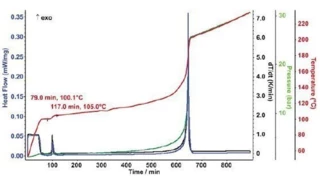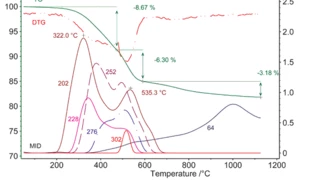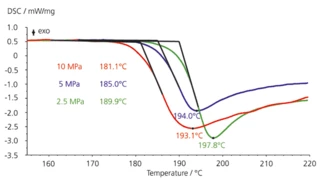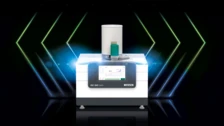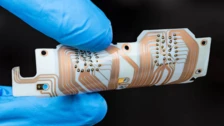
applications
Organics
DSC can be used to study the degree of purity of pharmaceutical active ingredients as derived from melting behavior, the OxidationOxidation can describe different processes in the context of thermal analysis.oxidation of fats and oils, or the curing of adhesives and powder paints as well as many other topics.
With TGA, information can be gathered about such topics as the denaturing of proteins, vapor pressure and solvent content of paints.
Using TMA and DMA, the coefficient of thermal expansion can be determined, and the penetration behavior and visco-elastic behavior of viscous fluids, pastes and powders can be described.
DEA can trace the flow properties of pastes and other masses, even during processing.
WithLFA, the Thermal DiffusivityThermal diffusivity (a with the unit mm2/s) is a material-specific property for characterizing unsteady heat conduction. This value describes how quickly a material reacts to a change in temperature.thermal diffusivity even of melts and liquids can be measured and the Thermal ConductivityThermal conductivity (λ with the unit W/(m•K)) describes the transport of energy – in the form of heat – through a body of mass as the result of a temperature gradient (see fig. 1). According to the second law of thermodynamics, heat always flows in the direction of the lower temperature.thermal conductivity determined.
Stopień czystości aktywnych składników produktów farmaceutycznych, utlenianie tłuszczów i olejów oraz utwardzanie klejów i farb, to tylko wybrane procesy, które możemy przeanalizować przy pomocy skaningowej kalorymetrii różnicowej (DSC).
Dodatkowe informacje np. o prężności par, denaturacji białek, zawartości rozpuszczalników w farbach dostarcza nam termograwimetria (TG).
Używając analizy termomechanicznej (TMA) oraz mechanicznej analizy dynamicznej (DMA) możemy otrzymać informację dotyczącą współczynnika rozszerzalności cieplnej materiałów, ich odporności na penetrację oraz właściwości lepkosprężystych past, zawiesin oraz proszków.
Przy pomocy analizy dielektrycznej (DEA) mamy możliwość monitorowania procesu utwardzania past oraz innych mas.
Uzupełnieniem powyższych metod jest laserowa metoda impulsowa (LFA) stosowana do określania przewodności i dyfuzyjności cieplnej cieczy oraz metali w stanie ciekłym.
Otrzymane przy pomocy analizy termicznej informacje odgrywają ważną rolę w optymalizacji procesu produkcyjnego zwłaszcza produktów farmaceutycznych oraz kosmetycznych, które mają na co dzień styczność z ludzkim ciałem.
Literatura dotycząca zastosowań

